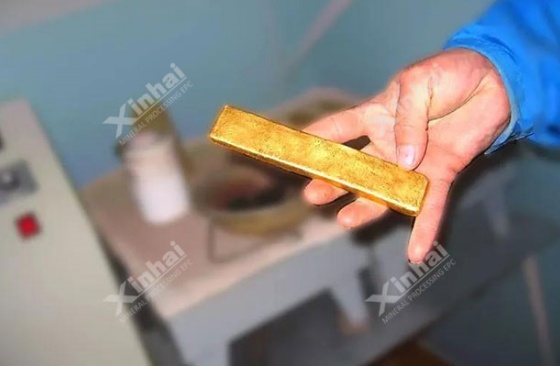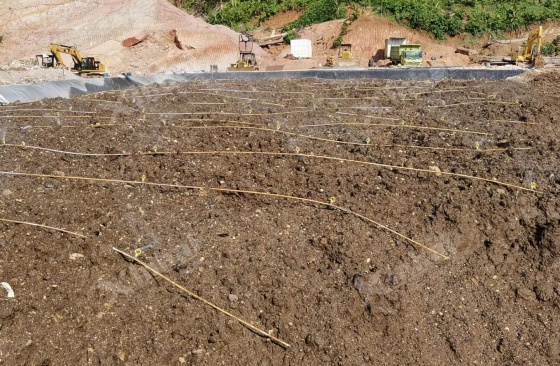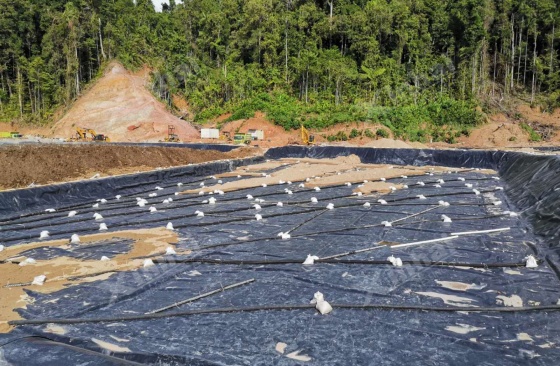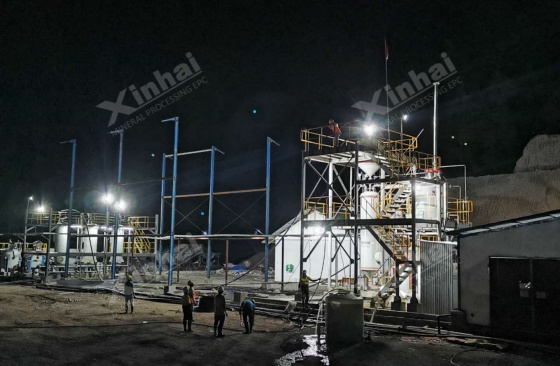If you want to know more information (such as product/process price, etc.), please contact us 24-hour telephone
Vat leaching, sometimes called tank leaching or vat cyanidation, is basically a wet process for pulling gold out of ore. You dump the crushed stuff into huge tanks, then let it sit and soak in cyanide solution under pretty strict watch to dissolve the gold nice and slow.
Out of all the cyanidation tricks, vat leaching kinda sits right in the middle—not as wild as heap leaching, but not as fancy or pricey as those stirred-up tanks in CIP (Carbon-in-Pulp) or CIL (Carbon-in-Leach). It gives you way better grip on the chemicals than just piling ore on a pad, yet it doesn’t demand the big bucks or complicated gear of full-on agitated setups.

Gold vat leaching works best on oxidized gold ores that are fairly rough-sized or packed with clay. Those kinds often choke in heap leaching—solution can’t flow right, or it gets trapped—so vats turn out smoother and less wasteful.
Particle Size: Medium to coarse bits are ideal; they let the leach solution trickle through without much fuss.
Permeability: Gotta have decent flow so the cyanide spreads even everywhere.
Gangue Composition: Less reactive junk in the rock keeps cyanide use down to a minimum.
Gold Occurrence: Free-milling gold or gold that can be accessed through limited crushing is ideal.
Compared to heap leaching, vat leaching offers better solution contact and faster kinetics. In contrast to CIP/CIL, it avoids the need for fine grinding and complex carbon handling systems, which may not be feasible for smaller operations.
Kicking off vat leaching means smashing and sifting the ore down to the right chunks. You shovel that busted rock into big ol’ vats built tough—usually slapped with concrete, HDPE, or steel so nothing leaks out or gets mucked up.

Whip up a cyanide mix and tweak the pH (keep it 10 to 11-ish) so the stuff stays put and doesn’t spit out nasty hydrogen cyanide gas. Pour it in the vat. It seeps slow through the pile during a soak that might drag a few hours or stretch days, all hinging on what the ore’s like and how much gold you wanna grab.
That gold-loaded pregnant solution drips out through under-drains down below. Snag the shiny from it by sucking it onto activated carbon, dusting in zinc for the Merrill-Crowe trick, or just cementation—whatever works.
The gold-bearing pregnant solution (~40 m³/h) is pumped through a series of three activated carbon columns. As the solution flows sequentially from the first to the final column, the gold is selectively adsorbed onto the carbon. The solution exiting the final column, now termed barren solution, is either recirculated as make-up leach solution or detoxified and discharged, while the loaded carbon from the lead column is advanced for gold elution.

Residue from the vat is washed to recover residual gold and cyanide before undergoing detoxification (commonly using SO2/air or hydrogen peroxide) and disposal.
A bunch of things really mess with how well gold vat leaching works out:
Cyanide Concentration: Usually hangs around 0.05% to 0.1%. Crank it up, sure you pull more gold, but your bill for chemicals shoots sky high too.
pH Control: Gotta keep that pH over 10, or the cyanide starts acting funny and falls apart.
Oxygen Supply: Gold won’t dissolve without oxygen kicking around. Most times it sneaks in on its own, but sometimes you toss in peroxide to help.
Temperature: Vat leaching runs fine in whatever weather’s outside, though a bit of warmth can speed the whole show up.
Stuff in the ore—like how fine it’s crushed (best under 10 mm), how damp it stays, how much clay’s gunking it up, and whether liquid can actually move through—affects how the cyanide gets in and hangs out long enough.
The soak usually lasts a day or drags on for a few. Nail the setup and watch, and you’re looking at pulling 70–90% of the gold.
Trouble pops up with solution sneaking down shortcuts, spots staying bone dry, or tiny bits clogging paths. Fix it by clumping ore right, soaking it first, and keeping tabs on pH and oxygen boosters.

Vat leach units are rectangular containers (drums, barrels, tanks or vats), usually very big and made of wood or concrete, lined with material resistant to the leaching media. The treated ore is usually coarse.
Essential components include:
Feeding Systems: Conveyor belts or manual loading mechanisms.
Discharge Systems: Bottom drainage with sloped floors for gravity-assisted flow.
Pumps & Piping: For solution transfer and circulation.
Monitoring Instruments: pH meters, flow meters, and oxygen sensors.
Layout considerations prioritize containment of process fluids, ease of access for maintenance, and scalability.
| Category | Advantages | Limitations |
|---|---|---|
| Process Efficiency | Shorter Leaching Cycles: Faster kinetics compared to heap leaching due to better control over solution contact. | Manual or Batch Operation: Less suited for continuous high-throughput production. |
| Chemical Management | Chemical Control: Allows tight regulation of pH and cyanide concentration. | Cyanide Management: Requires rigorous safety measures to handle toxic chemicals. |
| Ore Compatibility | Ore Flexibility: Works well with problematic ores like high-clay or low-permeability material. | Permeability Challenges: Fine-grained or clay-rich ores may cause clogging. |
| Economic Factors | Scalability: Suitable for small-to-medium operations with limited budgets. Low Investment Cost: Simpler than carbon leaching process with lower investment. | Higher Capital Cost than Heap Leaching: Infrastructure such as vats and pumps requires upfront investment. |
An exemplary project that demonstrates the effectiveness of vat leaching is the Indonesia 700TPD Gold Mine Vat Leaching Plant Project.
Gold in ore of the project was the only recyclable element with a grade of 2.6 g/t. Despite this moderate grade, optimized vat design enabled efficient recovery.
With stable operation of entire concentrator and reliable equipment quality, the beneficiation indexes and economic benefits had reached expectations of actual recovery rate with 85%. This high recovery rate was made possible through innovations in equipment layout and chemical process control by Xinhai Mining.
Additional systems such as Desorption Electrolysis and Activated Carbon Pickling Regeneration were integrated post-leaching to further enhance efficiency and produce gold bullions with a purity higher than 80% after smelting.

Vat leaching should be considered over heap leaching when ore types are not permeable enough for effective percolation or when climatic conditions hinder heap operations (e.g., cold regions). It also serves as a low-cost alternative to CIL/CIP where fine grinding is not practical.
Emerging trends include hybrid systems combining vat leaching with gravity separation or flotation pre-treatment, improved vat designs using modular components for rapid installation, and enhanced automation for real-time monitoring.
Environmental innovations such as glycine-based lixiviants or reduced-cyanide formulations are being piloted to minimize ecological impact while maintaining efficiency.
Handling cyanide in vat leaching demands strict adherence to environmental regulations. This includes:Proper storage and mixing facilities,Automated dosing systems,Emergency neutralization protocols,Liner integrity checks to avoid seepage,Tailings detoxification before discharge.
Worker safety is ensured through PPE usage, gas detection systems (for HCN), regular training, and process enclosure where possible.
Efficient residue washing minimizes cyanide loss into tailings while ensuring safe disposal practices are upheld.

Conclusion:
Gold vat leaching still holds up pretty solid in today’s gold game—especially if you match it right to the ore and what the site can handle. It shines at tackling tough stuff with tighter grip on chemicals than heap leaching, yet it skips the fancy hassle of stirred tanks.
Mines hunting cheap fixes that don’t skimp on pulling gold find it a no-brainer pick—doubly so when pros like Xinhai Mining sketch the layout.